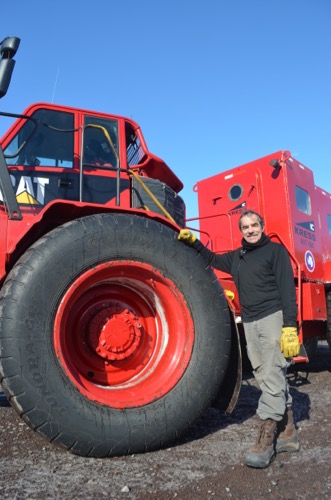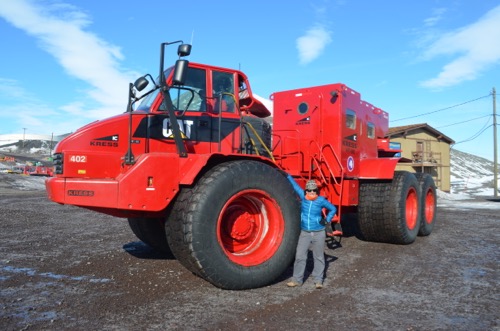Time to Take a Break
After an exciting week going in the Ob Tube, conducting water quality measurements, helping out with another biology project and collecting sediment samples near a penguin colony, I was relieved to have a day to just relax. I spent the morning talking to my family on the phone and eating a lovely brunch in the cafeteria.
Spending Time with Friends
I feel so lucky to be returning to Antarctica. One of the perks, along with already knowing the lay of the land, is running into old friends here. After brunch, I spent time with Bob Melville and Andy Stillinger, whom I worked with in 2011.
Another friend that I will hopefully have time to visit with is Shuttle Bob. In 2011, as soon as I stepped off the C17 plane onto the sea ice, I met Bob Lewis, warmly referred to by many in McMurdo Station as "Shuttle Bob". Shuttle Bob drives many impressive transport vehicles around McMurdo Station, including Ivan the Terra bus.

This year I ran into Shuttle Bob as he was dropping off scientists and staff in a giant vehicle made by Kress. As you can see, it is quite a large vehicle!

Movie Time!
After lunch, Terry Palmer, Steve Sweet and I watched television through the local network here. The station runs sports programs and movies on a few channels here, letting us enjoy some of the comforts of home. I thought you all might enjoy a film too! Check out the video below showing some of the sea life from my Ob Tube visit.

Comments